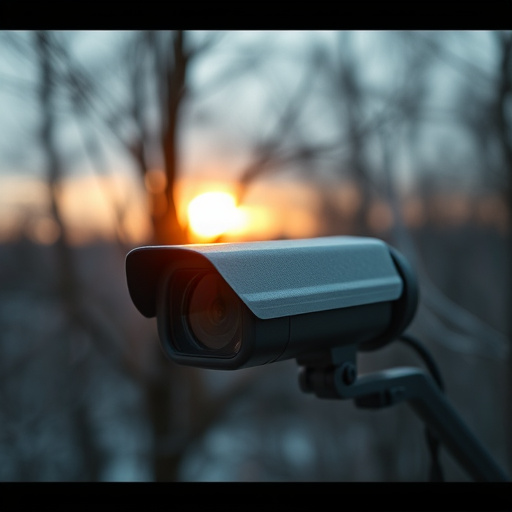In recent years, miniature surveillance devices (spy cameras) have advanced significantly, becoming smaller and more versatile, allowing for discreet video capture within everyday objects like buttons or fake smoke detectors. To identify these hidden devices, one must look beyond the surface for subtle indicators. Preventative measures include regular home inspections and keeping software current. The ethical use of spy cameras involves navigating local laws, obtaining consent where applicable, respecting personal space, and adhering to legal limits. Effective placement and routine upkeep are crucial for optimal performance in enhancing home security. Learn more about How to Conceal Spy Cameras responsibly.
“Uncover the world of miniature surveillance devices and their surprising integration into everyday home objects. This comprehensive guide explores the rise of hidden spy cameras, offering insights into their functionality and the art of concealment. From understanding the technology behind these tiny eyes to identifying them in common household items, we navigate the ethical landscape. Learn the dos and don’ts of setting up hidden security cameras, ensuring both your safety and privacy rights while mastering the skill of How to Conceal Spy Cameras effectively.”
- Understanding Miniature Surveillance Devices
- Identifying Common Home Objects as Spy Cameras
- Ethical and Legal Considerations for Concealing Spy Cameras
- Setting Up and Maintaining Hidden Security Cameras
Understanding Miniature Surveillance Devices
Miniature surveillance devices, or spy cameras, have evolved significantly in recent years, becoming smaller and more advanced than ever before. These tiny cameras can be easily concealed within everyday objects, transforming them into secret observers. From small buttons to fake smoke detectors, these devices offer a discrete way to capture video footage without raising suspicion. Understanding how to conceal these spy cameras is crucial for both personal privacy protection and security purposes.
The art of concealing spy cameras involves strategic placement, careful selection of objects, and utilizing the right technology. By integrating these miniature devices into everyday items, one can monitor activities without appearing intrusive. For instance, a hidden camera in a book or a fake rock with an internal lens can capture footage while remaining virtually undetectable. Knowing how to utilize these tools responsibly requires a balance between discretion and acquiring valuable insights from unseen angles.
Identifying Common Home Objects as Spy Cameras
Many everyday home objects have evolved into sophisticated miniature surveillance devices, capable of capturing video and audio without raising suspicion. From smart lightbulbs to seemingly innocuous kitchen appliances, these hidden cameras can be challenging to detect. To identify potential spy cameras, it’s essential to examine objects for subtle features like hidden lenses, micro-USB ports, or unusual markings. Look beyond the obvious—a camera in a vase might be concealed behind a plastic cover, while a clock could double as a surveillance device with a built-in lens.
Understanding how these devices are concealed is crucial when considering how to prevent or detect them. Manufacturers often use creative methods to integrate cameras into everyday items, making them nearly invisible to the naked eye. Being vigilant and regularly checking your home for unusual objects or devices is essential. Regularly updating security systems and keeping software up-to-date can also help mitigate risks associated with these miniature surveillance devices.
Ethical and Legal Considerations for Concealing Spy Cameras
The proliferation of miniature surveillance devices raises significant ethical and legal questions, especially when hidden within everyday home objects. While these tiny cameras can offer enhanced security, their use blurs the line between privacy and observation. Concealing spy cameras requires a delicate balance; understanding both local laws regarding covert surveillance and ethical boundaries is paramount.
Homeowners considering how to conceal spy cameras must act responsibly, ensuring transparency and obtaining consent where necessary. It’s crucial to respect personal space and avoid intruding on reasonable expectations of privacy. Proper placement, unobtrusive design, and clear signage can mitigate potential issues, allowing homeowners to leverage these technologies ethically and within legal limits.
Setting Up and Maintaining Hidden Security Cameras
Setting up and maintaining hidden security cameras involves a blend of technical expertise and creative camouflage. To effectively conceal spy cameras, start by selecting discreet locations within your home objects—a common trick is to integrate them into everyday items like light switches, power outlets, or even fake rocks. Once chosen, connect the camera to a power source and ensure it has a clear view of the target area without drawing attention. Regular maintenance includes checking battery life (for wireless models) and updating software for optimal performance. Keep in mind that while these cameras offer enhanced security, their effectiveness hinges on proper placement and routine upkeep.
Miniature surveillance devices, when hidden in everyday home objects, present a powerful tool for security and peace of mind. However, it’s crucial to navigate the ethical and legal landscape carefully. Understanding how to conceal spy cameras effectively involves more than just setting them up; it requires knowledge of both technology and responsibility. By following best practices for placement, maintenance, and respecting privacy, individuals can leverage these devices for enhanced home security without infringing on others’ rights. Ultimately, the key lies in striking a balance between protection and transparency.
